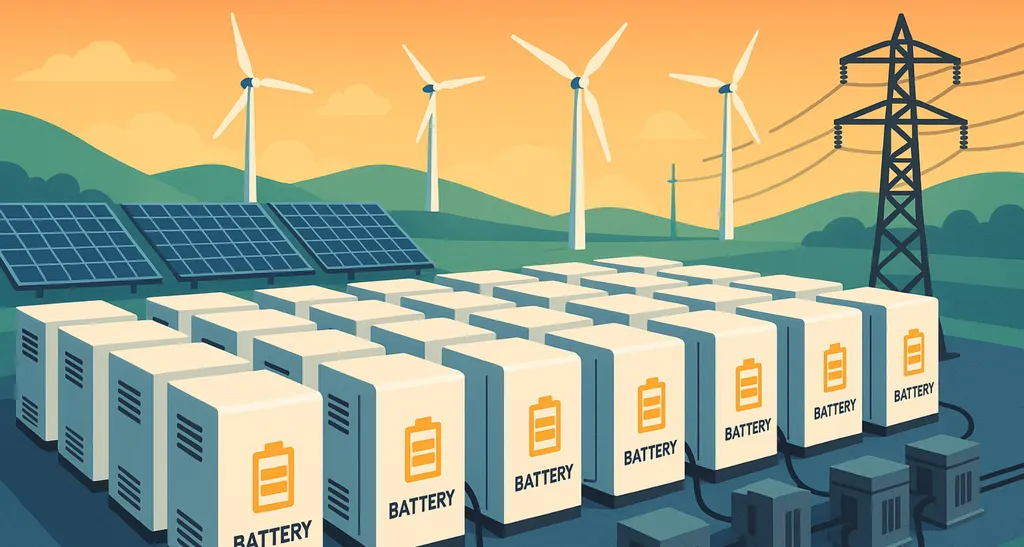In the quest for a more stable and reliable grid, researchers have been exploring the potential of integrated wind storage systems. These systems combine wind turbines with hybrid energy storage to provide excellent frequency regulation, crucial for maintaining grid stability. However, the coordination between wind turbines and energy storage systems has been a challenge, particularly at the unit level. Now, a team led by Jiandong Duan from Xi’an University of Technology has developed an adaptive primary frequency regulation method that could revolutionize how we integrate wind power into the grid.
Duan and his team focused on integrated unit-level wind storage systems (IUWSS), which combine wind turbines with hybrid energy storage systems. Their goal was to improve the coordination between these components to enhance frequency regulation. “The key is to understand the energy perspective of both the wind turbine and the energy storage system,” Duan explained. “By doing so, we can create a more adaptive and flexible frequency regulation method.”
The researchers first analyzed the wind speed intervals suitable for wind turbine deloading control, which is a technique used to reserve energy for frequency regulation. They then developed an adaptive deloading control strategy that adjusts the deloading degree dynamically based on frequency fluctuations. This means the wind turbine can respond more effectively to changes in grid frequency, providing a more stable power output.
Next, they calculated the frequency regulation energy scaling factor of the hybrid energy storage system based on the wind turbine’s operating status. This factor determines the output power of the energy storage system, enabling it to work in tandem with the wind turbine for adaptive primary frequency regulation.
To test their method, the team simulated a typical power grid with IUWSS under different operating conditions and frequency regulation methods. The results were impressive. The proposed method improved frequency regulation by up to 17% compared to synthetic inertia control under specific conditions. This means a more stable grid, reduced risk of blackouts, and potentially lower costs for grid operators.
The implications of this research are significant for the energy sector. As more wind power is integrated into the grid, effective frequency regulation becomes increasingly important. This adaptive method could make wind power a more reliable and attractive option for grid operators, potentially accelerating the transition to renewable energy.
Moreover, this research could pave the way for more advanced control strategies in integrated wind storage systems. As Duan put it, “Our method provides a new perspective on how to coordinate wind turbines and energy storage systems. It’s a step towards a more intelligent and adaptive grid.”
The study was published in the International Journal of Electrical Power & Energy Systems, a testament to its rigorous methodology and significant findings. As the energy sector continues to evolve, research like this will be crucial in shaping a more sustainable and reliable future. The adaptive primary frequency regulation method developed by Duan and his team is a promising step in that direction, offering a glimpse into the future of grid integration for renewable energy.

